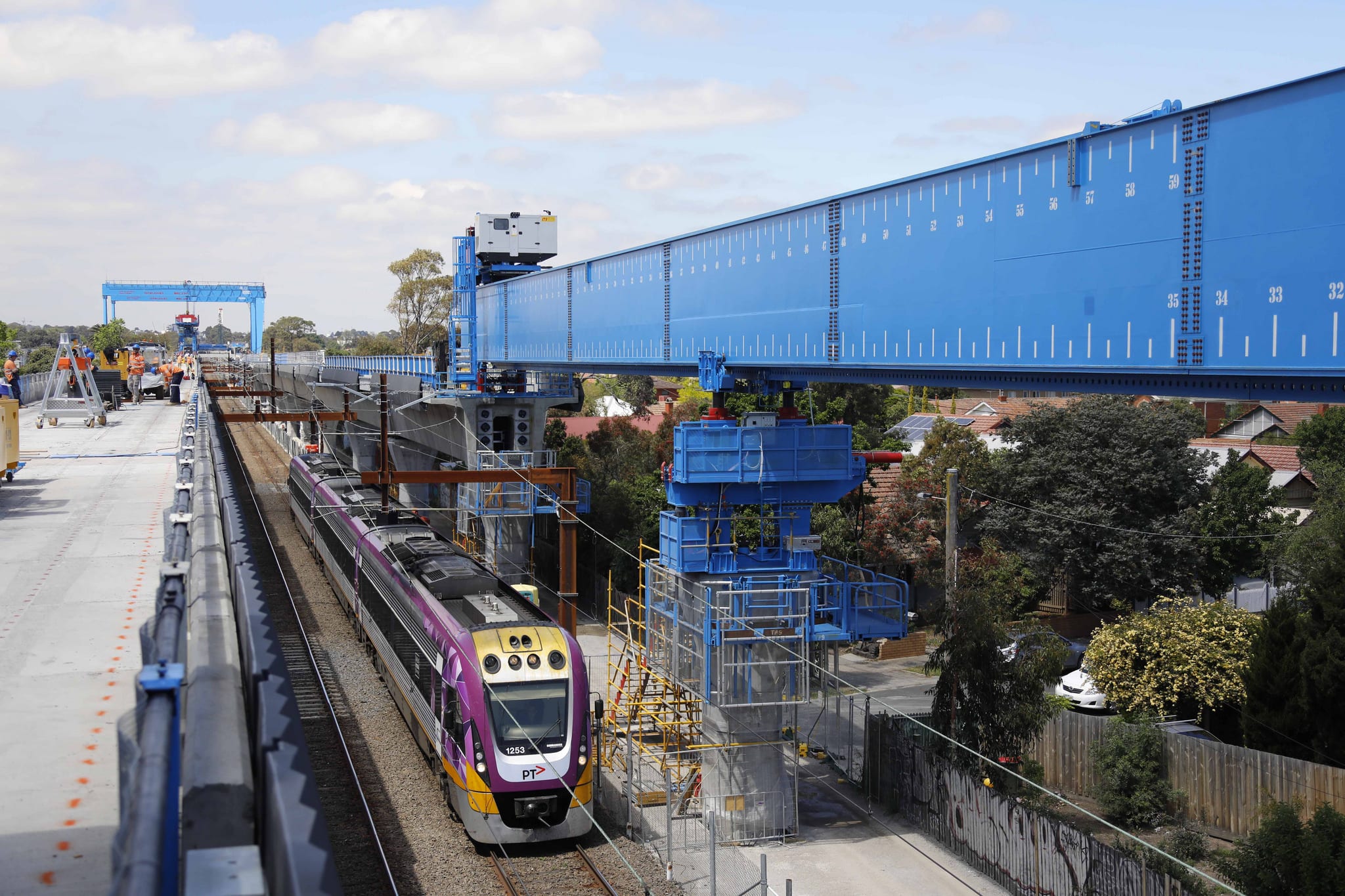Caulfield to Dandenong Level Crossing Removal
Challenge
Provide systems engineering, safety assurance and requirements management support across the $1.6b level crossing removal project and enable the use of cutting-edge carrier technology to construct elevated rail sections in a suburban corridor in compliance with ONRSR’s Major Project Guideline.
Approach
Using IBM DOORS Next, Acmena established and configured a requirements framework to provide essential visibility, traceability and collaboration across the project. By providing experienced personnel in key project areas, Acmena successfully aligned the project requirements with ONRSR guidelines and developed the safety case required for the daytime use of the straddle carrier over a live railway.
Outcome
Major works are now complete, with the use of the straddle carrier enabling the project to be completed on time and with minimal disruption.
Acmena’s systems engineering and assurance expertise plays a critical role in delivering Melbourne’s benchmark level crossing removal project.
Announced by the Victorian Government in 2015, the Level Crossing Removal Program is one of the largest, most ambitious rail infrastructure projects in the state’s history.
Costing an estimated $8.3b, the program of works is the first to be implemented under the Office of the National Rail Safety Regulator’s (ONRSR) Major Projects Guideline, introduced to set minimum national safety requirements for large-scale rail projects.
The largest and most challenging package of the development was the Caulfield to Dandenong (CTD) project, which began in 2016 and involved the removal of nine dangerous level crossings from Melbourne’s busiest and least reliable line.
As part of a $1.6b solution, three sections of elevated railway spanning 6km in total were constructed, along with five new stations at Carnegie, Murrumbeena, Hughesdale, Clayton and Noble Park. Signalling and power infrastructure along the lines were also upgraded in preparation for the new High Capacity Metro Trains, due to enter service in 2019.
Controlling complexity
In 2016, Acmena was selected to provide systems engineering and assurance support for the CTD Alliance, comprised of rail operator Metro Trains Melbourne (MTM) and four major construction and engineering contractors.
Over 450 designers, planners and engineers were involved with the project through the Alliance, in addition to numerous sub-contractors, state infrastructure authorities and community stakeholders.
With so many multi-discipline teams, work streams and organisations involved, in addition to the use of novel designs and technologies, CTD became one of the most complex rail projects ever attempted in Victoria, which made managing and fulfilling the countless construction, safety and environmental requirements particularly challenging.
“One of the biggest challenges was the sheer scale of the project and having so many people involved,” said Kyla Brown, Systems Engineering Manager for the Level Crossing Removal Project. “Managing that was quite difficult, as was maintaining the flow of communication between people to make sure that everyone was informed.”
To facilitate the level of visibility, communication and collaboration needed across the partnership, and to effectively link and manage the project’s vast number of requirements, standards and controls, Acmena chose IBM DOORS Next to establish CTD’s requirements framework.
Offering the flexibility of a cloud-based platform with concurrent editing capability and automated version control, DOORS Next was a critical component in Acmena’s efforts to integrate the various engineering, construction, human factors and safety programs.
It also enabled its consultants to provide the level of progressive assurance required to gain regulator approval for critical elements of the development, particularly the use of straddle carrier technology.
Unparalleled support for unprecedented technology
With the lines from Caulfield to Hughesdale situated in a narrow residential corridor, it would have been impossible to use conventional methods to construct the 3.2km elevated sections without causing extensive disruption to existing rail services and infrastructure.
To minimise disruption and ensure the project was completed within its narrow timeframe, two gantry cranes and a 60m wheeled carrier were imported to lift the 174 spans needed to build the elevated sections and move them in to place.
As it was the first time the technology had been used in Australia, Acmena’s understanding of regulatory requirements and pragmatic assurance expertise played a vital role in developing the extensive safety cases needed to demonstrate to ONRSR and MTM that the straddle carrier could be safely used over a live rail during the daytime.
“Acmena was the only team that really understood what assurance meant from ONRSR’s perspective and what evidence was needed to show that their requirements had been met at that level.” said Brown. “They provided risk assessments and demonstrations to prove that the crane could be safely used with the rail running underneath, which eventually allowed construction work to be carried out during the day.”
Leading the way for future developments
In addition to supplying personnel for the key roles of Systems Engineering Manager and Systems Assurance Manager, Acmena was able to draw on its extensive range of systems engineering expertise and experience to provide essential capability across the entire scope of the project.
Working collaboratively and transparently with project stakeholders to overcome the various challenges involved with such a complex project, Acmena was able to successfully integrate the efforts of multi-discipline teams and deliver a systematic and structured approach that resulted in the project being commissioned as scheduled.
Additionally, Acmena’s pragmatic working methods and use of DOORS Next have subsequently been adopted by LRXA and employed on other level crossing removal projects.
“What’s unique about Acmena is the combination of competencies they have,” said Brown. “They can provide systems engineering and systems assurance support, but they also understand how RAM, human factors, safety and risk integrate and can help with those solutions. Acmena can provide more than just assurance, they have got the full complement of everything that you would want to assure and are very willing to help.”
Related Projects:
Related Content:

Expertise
Requirements Management
Safety Assurance
Systems Engineering
